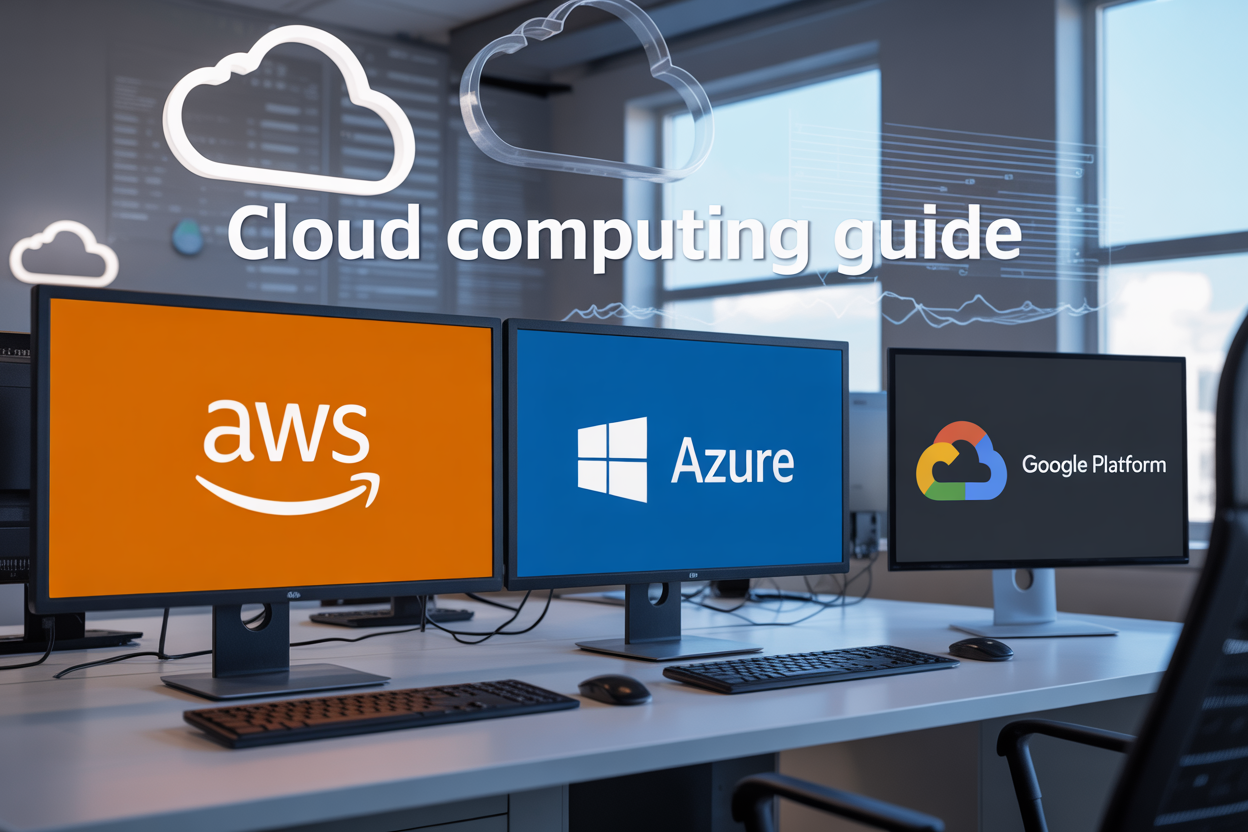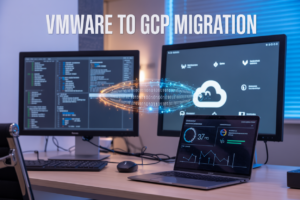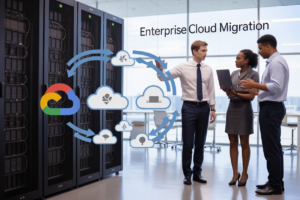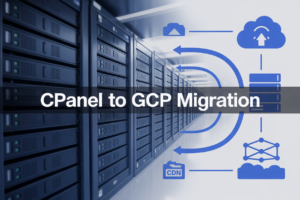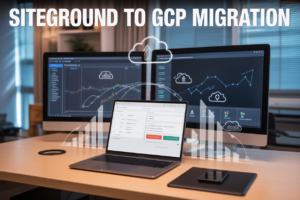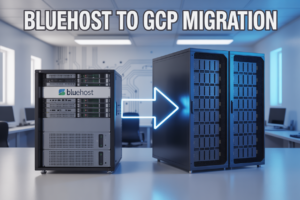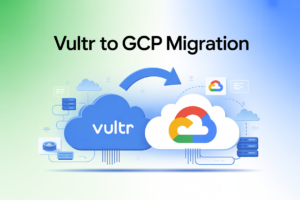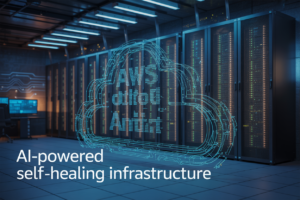Cloud computing has transformed how businesses store data, run applications, and scale operations. This guide breaks down everything beginners need to know about the three major cloud providers: Amazon Web Services, Microsoft Azure, and Google Cloud Platform.
Who this guide is for: IT professionals exploring cloud options, business owners planning digital transformation, and developers ready to move beyond traditional servers.
You’ll discover the core features and strengths of each platform, see how AWS vs Azure vs Google Cloud stack up in real-world scenarios, and learn how to create a practical cloud migration strategy for your specific needs. We’ll also cover cloud computing fundamentals that apply across all providers, so you can make informed decisions about which platform fits your budget, technical requirements, and business goals.
By the end, you’ll understand which cloud provider offers the best value for your use case and have a clear roadmap for getting started with cloud computing.
Understanding Cloud Computing Fundamentals

What is cloud computing and why it matters for businesses
Cloud computing delivers computing resources like servers, storage, databases, and software over the internet, replacing traditional on-premises infrastructure. Instead of buying and maintaining physical hardware, businesses access these services on-demand from cloud providers. This shift transforms how companies operate by eliminating upfront capital investments and reducing IT maintenance burdens. Modern businesses rely on cloud computing to scale quickly, support remote workforces, and stay competitive in digital markets.
Key benefits of migrating to the cloud
Moving to the cloud offers significant cost savings by converting fixed IT expenses into variable costs that scale with usage. Businesses gain instant access to enterprise-grade security, automatic backups, and disaster recovery capabilities that would be expensive to implement internally. Cloud platforms provide global reach, allowing companies to deploy applications worldwide within minutes. The flexibility to scale resources up or down based on demand means businesses only pay for what they use, making cloud migration an attractive strategy for organizations of all sizes.
Common cloud service models explained
Cloud providers offer three primary service models that cater to different business needs. Infrastructure as a Service (IaaS) provides virtual machines, storage, and networking components, giving businesses complete control over their computing environment. Platform as a Service (PaaS) includes development tools, databases, and runtime environments, allowing developers to build applications without managing underlying infrastructure. Software as a Service (SaaS) delivers ready-to-use applications through web browsers, eliminating the need for local installation and maintenance. Understanding these models helps businesses choose the right cloud computing approach for their specific requirements.
Amazon Web Services (AWS) Overview
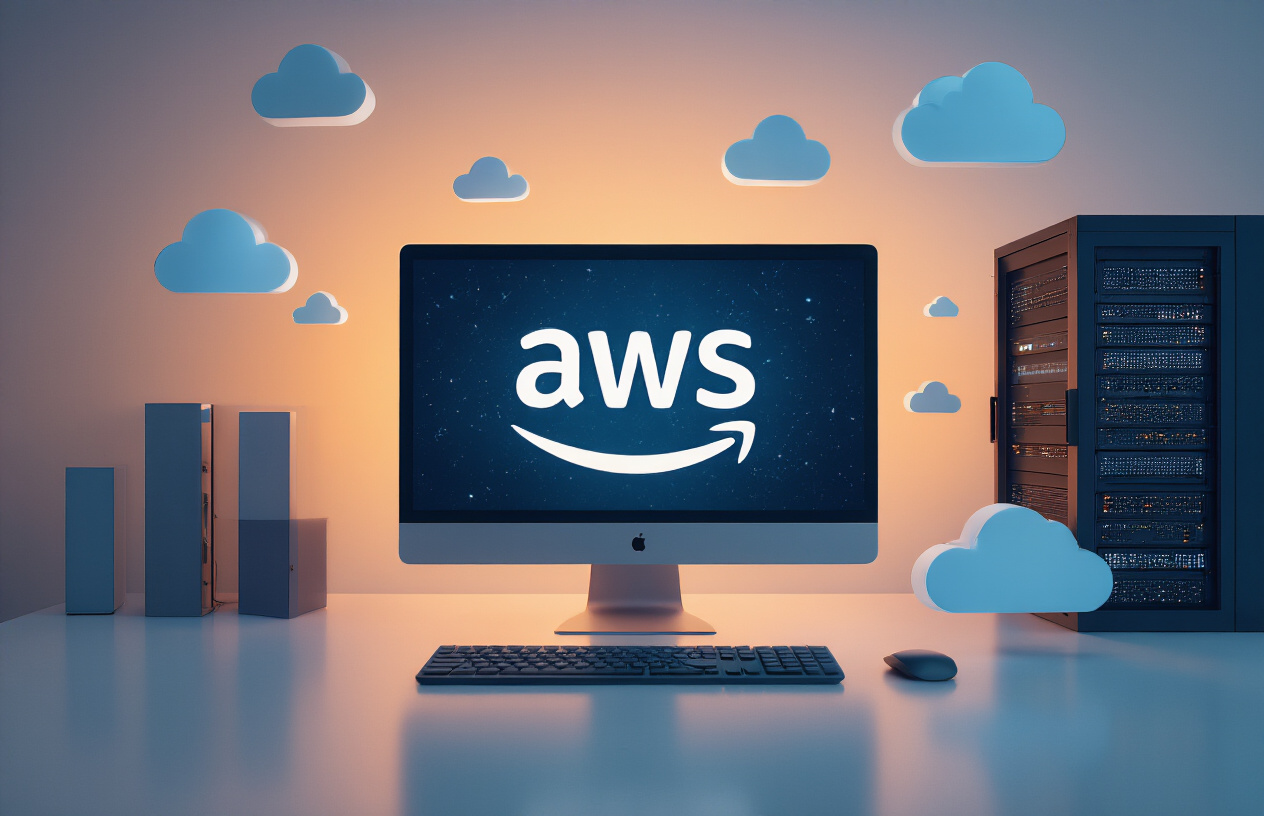
Core AWS services every beginner should know
When diving into Amazon Web Services, focus on these essential services that form the backbone of most cloud solutions. EC2 (Elastic Compute Cloud) provides virtual servers for running applications, while S3 (Simple Storage Service) offers scalable object storage for files and data. RDS handles relational databases with automated backups and scaling. Lambda enables serverless computing for running code without managing servers. VPC (Virtual Private Cloud) creates isolated network environments for security. CloudWatch monitors your resources and applications. IAM (Identity and Access Management) controls user permissions and access. These services work together seamlessly, allowing you to build everything from simple websites to complex enterprise applications. Start with EC2 and S3 to get hands-on experience, then gradually explore other services as your needs grow.
AWS pricing structure and cost optimization tips
AWS follows a pay-as-you-go pricing model where you only pay for resources you actually use. Compute services like EC2 charge by the hour or second, while storage services like S3 bill based on data volume and requests. Network data transfer costs apply when moving data between regions or to the internet. Take advantage of Reserved Instances for long-term workloads to save up to 75% compared to on-demand pricing. Use Spot Instances for flexible workloads that can handle interruptions, offering savings up to 90%. The Free Tier provides generous limits for new accounts, including 750 hours of EC2 micro instances monthly. Set up billing alerts and use the Cost Explorer to track spending patterns. Right-size your instances regularly and automate shutdowns for development environments to avoid unnecessary charges.
Getting started with your first AWS account
Creating your AWS account takes just minutes and requires a valid email address, phone number, and credit card for identity verification. AWS won’t charge your card unless you exceed Free Tier limits or use paid services. After signup, secure your account immediately by enabling multi-factor authentication (MFA) on your root account. Create an IAM user for daily tasks instead of using the root account, following AWS security best practices. Download the AWS CLI for command-line access and install AWS SDKs if you plan to develop applications. The AWS Management Console provides a web-based interface for managing all services. Complete the getting started tutorials for EC2 and S3 to launch your first virtual server and store files in the cloud. Join AWS forums and explore the extensive documentation to accelerate your learning journey.
Popular AWS use cases and success stories
Companies worldwide rely on AWS for diverse applications that showcase the platform’s versatility. Netflix streams billions of hours of content using AWS’s global infrastructure and auto-scaling capabilities. Airbnb handles millions of bookings and searches through AWS’s database and analytics services. Spotify delivers music to over 400 million users leveraging AWS’s content delivery networks and machine learning tools. Common use cases include web application hosting where businesses deploy scalable websites and APIs, data backup and disaster recovery for protecting critical information, big data analytics for processing massive datasets, and DevOps automation for continuous integration and deployment. Startups choose AWS for its pay-as-you-grow model, while enterprises migrate legacy systems to improve performance and reduce costs. The platform supports everything from simple static websites to complex AI-powered applications, making it suitable for businesses of all sizes.
Microsoft Azure Platform Deep Dive

Azure’s unique strengths and enterprise integration
Microsoft Azure platform stands out for its seamless integration with existing Microsoft ecosystems, making it perfect for organizations already using Office 365, Windows Server, or SQL Server. Azure Active Directory connects your on-premises identity management with cloud services, while hybrid cloud capabilities let businesses gradually migrate workloads. The platform excels in enterprise-grade security and compliance certifications, offering built-in disaster recovery and backup solutions that many large corporations trust for their critical applications.
Essential Azure services for new users
Start your Azure journey with these core services: Virtual Machines for computing power, Azure Storage for data management, and Azure SQL Database for relational data needs. App Service simplifies web application deployment, while Azure Functions handles serverless computing tasks. Content Delivery Network speeds up global content delivery, and Azure Monitor provides comprehensive tracking of your resources. These fundamental services cover most basic cloud computing requirements and integrate smoothly with each other.
Azure pricing models and budget management
Azure offers flexible pricing through pay-as-you-go, reserved instances, and spot pricing for virtual machines. Reserved instances provide up to 70% savings for predictable workloads, while spot instances offer deep discounts for flexible computing needs. Azure Cost Management tools help track spending with real-time alerts and budget controls. Free tier accounts include $200 credit for exploration, plus always-free services like App Service and Azure Functions with generous monthly allowances for new users.
Google Cloud Platform Essentials

Google Cloud’s standout features and innovations
Google Cloud Platform basics center around Google’s expertise in data analytics, artificial intelligence, and global infrastructure. Built on the same technology powering Google Search and YouTube, GCP offers unique advantages like live migration of virtual machines, custom machine types, and sustained use discounts. The platform excels in big data processing with BigQuery, container orchestration through Google Kubernetes Engine, and serverless computing via Cloud Functions. Google’s commitment to open-source technologies and multi-cloud strategies sets it apart from competitors.
Key GCP services to launch your cloud journey
Starting your cloud computing journey with Google Cloud requires understanding core services across compute, storage, and networking. Compute Engine provides scalable virtual machines, while App Engine offers fully managed serverless application hosting. Cloud Storage delivers object storage with multiple classes for different access patterns. Cloud SQL manages relational databases, and BigQuery handles data warehousing. Networking services include Virtual Private Cloud for secure connectivity. Identity and Access Management ensures security, while Cloud Console provides centralized management for all resources and billing.
Understanding Google Cloud’s pricing approach
Google Cloud’s pricing model emphasizes transparency and cost optimization through sustained use discounts, preemptible instances, and per-second billing. Unlike traditional hourly billing, GCP charges by the second after the first minute, reducing costs for short-running workloads. Sustained use discounts automatically apply when running instances for significant portions of the month. Preemptible VMs offer up to 80% savings for fault-tolerant applications. The pricing calculator helps estimate costs, while committed use contracts provide additional discounts for predictable workloads. Custom machine types allow precise resource allocation.
Leveraging Google’s AI and machine learning capabilities
Google Cloud’s AI and machine learning capabilities represent the platform’s strongest differentiator in cloud providers comparison. Pre-trained APIs like Vision AI, Natural Language AI, and Speech-to-Text require no machine learning expertise. AutoML enables custom model training with minimal coding. Vertex AI provides a unified platform for building, deploying, and scaling ML models. BigQuery ML integrates machine learning directly into data warehouses. TensorFlow integration offers seamless model development. These tools democratize artificial intelligence, making advanced capabilities accessible to businesses regardless of their technical expertise or resources.
Comparing the Big Three Cloud Providers
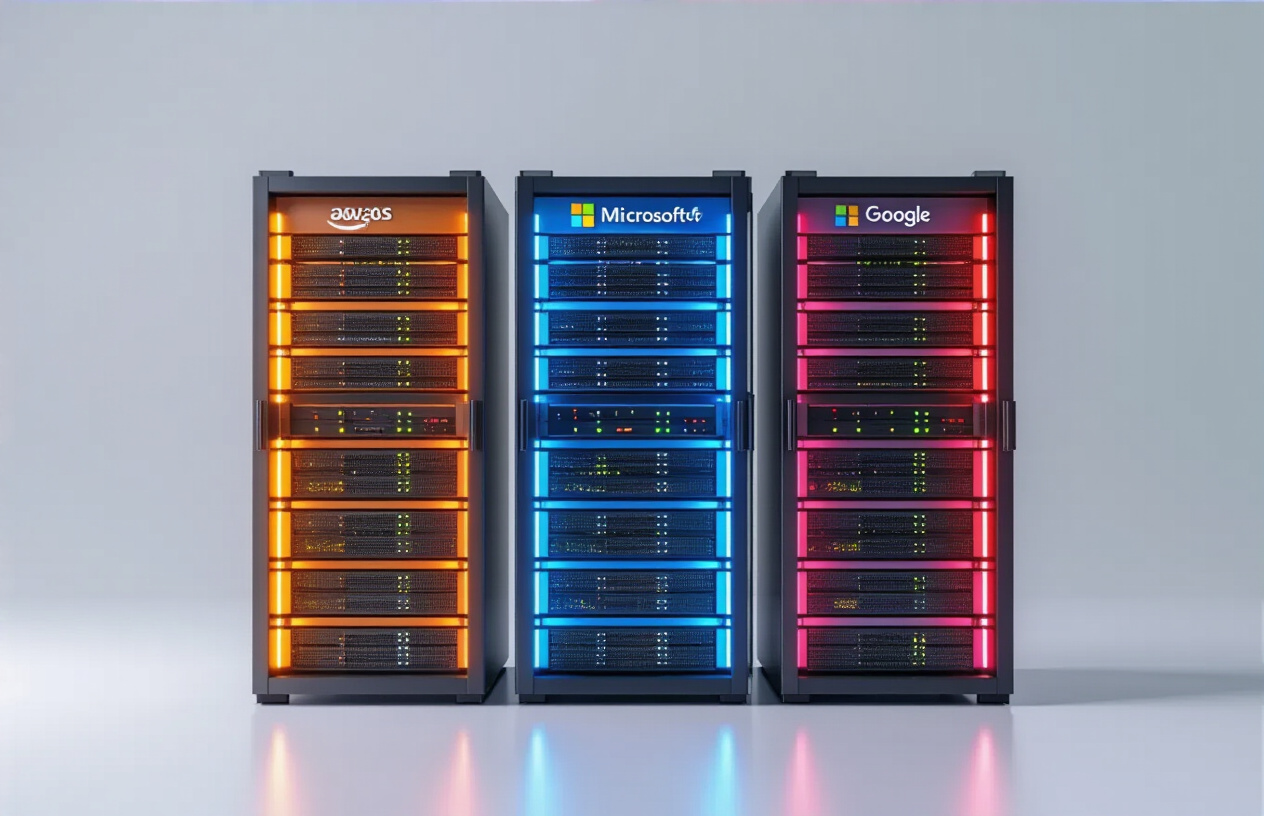
Performance and reliability comparisons
All three major cloud providers deliver enterprise-grade performance with 99.9%+ uptime guarantees. AWS leads in global infrastructure with the most availability zones worldwide, while Azure excels in hybrid cloud integration and Windows-based workloads. Google Cloud Platform stands out for machine learning capabilities and network performance, leveraging Google’s fiber-optic infrastructure. Each provider offers auto-scaling, load balancing, and redundancy features to ensure consistent application performance across different regions and traffic loads.
Security features and compliance standards
Security remains a top priority across AWS vs Azure vs Google Cloud platforms. AWS provides over 300 security tools and services, including Identity and Access Management (IAM) and encryption at rest and in transit. Microsoft Azure integrates seamlessly with Active Directory and offers advanced threat protection through Azure Security Center. Google Cloud Platform emphasizes zero-trust security models with BeyondCorp and provides robust data encryption. All three platforms maintain extensive compliance certifications including SOC 2, ISO 27001, HIPAA, and GDPR, making them suitable for regulated industries like healthcare and finance.
Support options and learning resources
Each cloud provider offers comprehensive support tiers ranging from basic documentation to premium enterprise support with dedicated technical account managers. AWS provides extensive documentation, hands-on labs, and AWS Training and Certification programs. Azure offers Microsoft Learn platform with interactive learning paths and integration with existing Microsoft training resources. Google Cloud Platform features Qwiklabs for practical experience and Google Cloud training courses. All three platforms maintain active community forums, detailed API documentation, and extensive third-party learning resources to help beginners and experts alike master cloud computing fundamentals.
Making the right choice for your specific needs
Choosing between cloud providers depends on your organization’s specific requirements, existing technology stack, and long-term goals. Consider AWS if you need the broadest service portfolio and global reach. Select Azure when you’re heavily invested in Microsoft technologies or require strong hybrid cloud capabilities. Choose Google Cloud Platform for advanced analytics, machine learning projects, or cost-effective compute resources. Evaluate factors like pricing models, technical expertise within your team, integration requirements, and your cloud migration strategy. Many organizations adopt a multi-cloud approach to avoid vendor lock-in and leverage each provider’s strengths for different workloads and business requirements.
Building Your Cloud Migration Strategy

Assessing your current infrastructure and requirements
Start by taking a complete inventory of your existing IT infrastructure, including servers, storage systems, applications, and network configurations. Document your current workloads, performance metrics, and business-critical applications that require specific compliance or security requirements. Evaluate your team’s technical skills and identify knowledge gaps that need addressing before starting your cloud migration strategy. Consider factors like data sensitivity, regulatory compliance, bandwidth requirements, and integration dependencies that will influence your cloud computing approach.
Planning your first cloud project step-by-step
Begin with a pilot project that’s low-risk but high-visibility to demonstrate cloud computing value to stakeholders. Choose a non-critical application or development environment for your initial migration to AWS, Azure, or Google Cloud Platform. Create a detailed project timeline with clear milestones, budget allocations, and success metrics. Set up proper monitoring and backup systems before moving any production workloads. Establish governance policies for resource management, cost control, and security protocols that align with your organization’s standards.
Best practices for a smooth transition
Implement a phased migration approach rather than attempting a complete infrastructure overhaul simultaneously. Train your IT team on cloud computing fundamentals and specific platform tools before beginning the migration process. Establish clear communication channels between stakeholders and create detailed documentation for all migration procedures. Test everything thoroughly in a staging environment before moving to production systems. Monitor costs closely during the transition period and optimize resource allocation to prevent unexpected expenses while ensuring optimal performance across your chosen cloud platform.
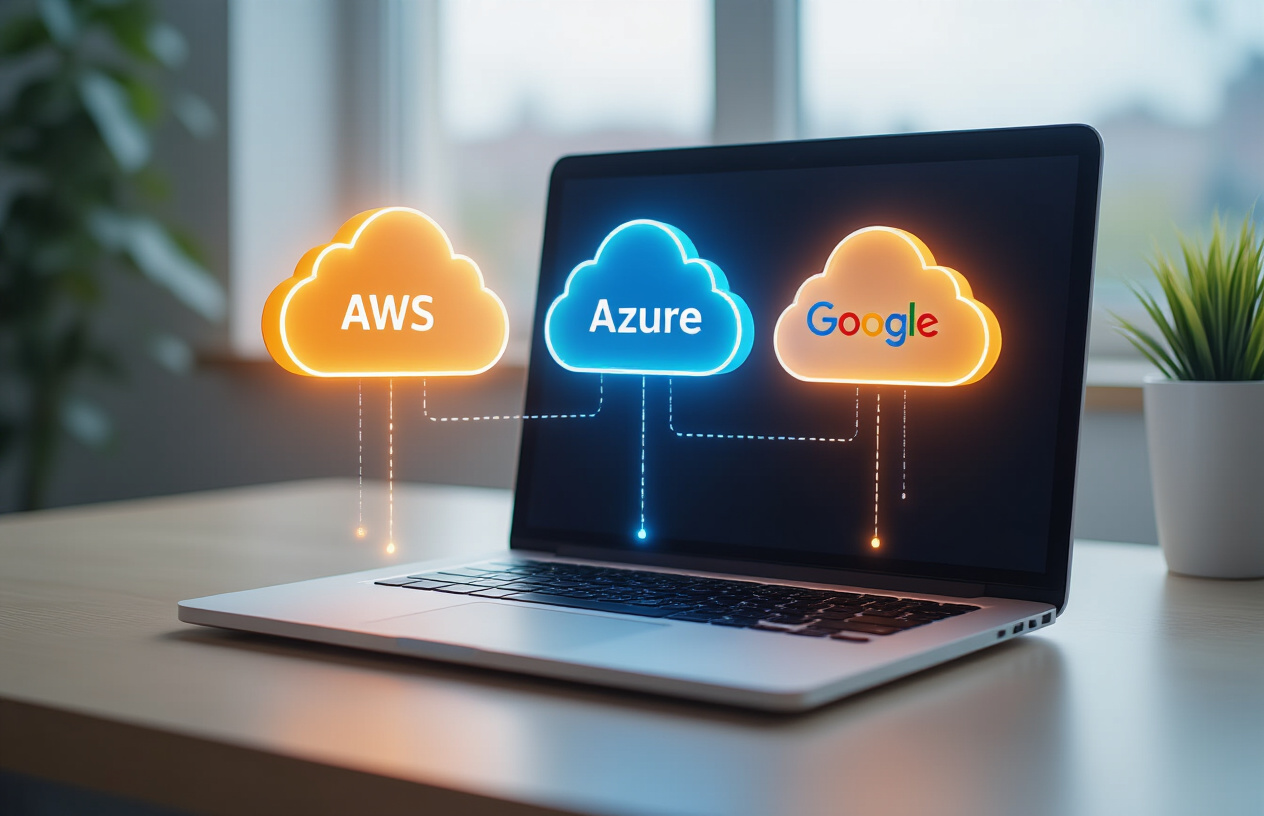
The three major cloud platforms each bring something unique to the table. AWS leads with its massive service catalog and market dominance, Azure shines with seamless Microsoft integration, and Google Cloud excels in data analytics and machine learning capabilities. Your choice really comes down to your specific needs, existing tech stack, and budget constraints.
Starting your cloud journey doesn’t have to be overwhelming. Pick one platform that aligns best with your current setup and begin with a small pilot project. As you get comfortable with the basics like storage, computing, and networking, you can gradually explore more advanced features. The key is to start small, learn as you go, and scale up when you’re ready. Cloud computing isn’t just the future – it’s happening right now, and there’s never been a better time to jump in.










